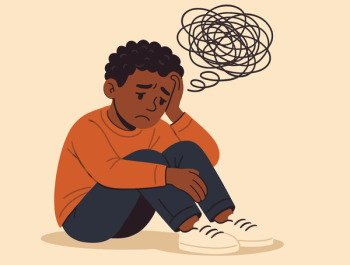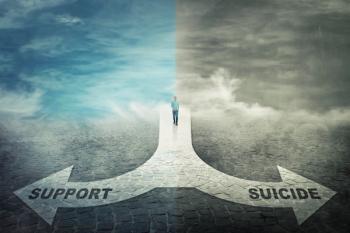
First Responders and Mental Health: When Heroes Need Rescuing
As Suicide Prevention Month continues, we take a look at the mental health of a group constantly caring for others: first responders.
As September is National Suicide Prevention Awareness Month, this article focuses on the exposure and affect regarding those who have been charged with protecting the population’s health and preserving a community’s population—namely, first responders.
In 2022, the world has been challenged by several unprecedented large-scale crisis events such as increases in
Definitive trends also underscore these kinds of questions regarding first responders and the pathos-defined issues that have emerged from studies that depict PTSD, suicide, depression, alcoholism, and drug abuse as most predominant among this group of professionals.1 Although this observation was made nearly a decade ago, current research shows these same trends have negatively increased in 2022.
As well, more sobering statistics from the Centers for Disease Control and Prevention (CDC) have found that occupational stress in first responders can be associated with increased risk of serious mental health issues including hopelessness, anxiety, depression, posttraumatic stress, and
The following article presents a purview and inquiry into how society, policy makers, and government agencies can begin to synthesize the current trends regarding the mental health issues of first responders, as well as their compromised and vulnerable realities, and emotional valance. Additionally, this article examines a few of the current promising psychological preventatives being tested with first-responder populations and the future prospects to be considered for building mental health resources for this group.
The Role of the First Responder
To more clearly define “first responders,” one must consider the cross-segment of industry categorized as helping professionals, where the primary role is first-line contact in any emergency situation. For the purposes of this article, the author will refer to such a role primarily as “first responder”; however, this reference can be somewhat arbitrary, and first responders may also be characterized as “emergency response providers” or “public health workers.” Either way, first responders are those who must meet the challenging demands of their front-line status within roles that represent a collection of various helping professions.
Under the umbrella of those considered first responders are police officers, firefighters, and emergency medical technicians (EMTs). Given their occupational demands, these helping professionals are the ones who are also the most chronically exposed to stress and traumatic scenes in the line of duty on a daily basis. To expand on this, according to Title VI from the Domestic Security of the US Code, the term “emergency response providers” might also include federal, state, and local governmental and nongovernmental emergency public safety, fire, law enforcement, emergency response, emergency medical (including hospital emergency facilities), and related personnel, agencies, and authorities.3
The next section provides a look at some of the emergent literature that has been documented concerning the mental health sequelae of first responders and the psychopathology that may perseverate. This may include the artifacts of depression, anxiety, suicidal ideation, and a host of other variants.
Statistics on First-Response Personnel
Some statistics provided on first responders and their mental health have been documented by the US Department of Healthin a supplement from the Substance Abuse and Mental Health Administration Help for Heroes Program.4 The statistics reveal the following associated with firefighters, police officers, and EMS professionals5-7:
“It is estimated that 30 percent of first responders develop behavioral health conditions including, but not limited to, depression and [PTSD], as compared with 20% in the general population. In a study about suicidality, firefighters were reported to have higher attempt and ideation rates than the general population. In law enforcement, the estimates suggest between 125 and 300 police officers commit suicide every year.”
These are staggering results compared to those in other professions. If one reflects on the nature of each of these roles and what they are called to do to preserve life and community, the possibility of such tremendous role strain will always have some psychological implications. In looking at the work of firefighters, for example, these professionals are often the first on the scene in an emergency response call. “The nature of their work, including repeated exposure to painful and provocative experiences, and erratic sleep schedules, can impose significant risks to their mental health.”8 Thus, repeated exposure to hard circumstances that arise from crises are, by nature, psychically scarring and elevate the risk for future traumatic sequelae. To this end, one may add yet another insidious element of risk to be considered: intrinsic barriers that bar them from seeking help because of stigma, diminished capacity on the job, informal codes of silence, and treatment costs.
As with most exposure to extreme stressors, the elevated risk of things like anxiety, suicidal ideation,
In turn, according to Bentley et al, an estimated 69% of EMS providers report not having enough recovery time between traumatic incidents.9 As most EMS providers are expected to be on duty for strenuous amounts of time—up to and beyond 24 hours—the duration and intensity of being on-call, engaging in extremely stressful situations, and having little opportunity for rest in between incidents becomes an unbalanced centrifuge of extraordinary circumstances to contend with that can lead to negative outcomes for the individual. Also, EMS workers typically experience greater noted degrees of problematic alcohol and drug use—more so than the general population.6 Like firefighters and police officers, most EMS personnel are reluctant to seek care due to fears of
In a number of studies, first responders showed disturbingly clear outcomes in reference to suicidal ideation. According to the studies, there was a 28% lifetime prevalence rate of feeling as though life was not worth living, 10.4% had more extreme instances of suicidal ideation, and 3.1% revealed past suicide attempts. As well, 37% of the first responders surveyed for 2 primary studies had contemplated suicide nearly 10 times more than the typical American adult. The lifetime prevalence of suicidal ideation among police officers was revealed to be 25% in female officers and 23% for male officers. Suicide attempt rates among police officers ranged from 0.7% to 55% in studies based on extensive literature reviews.11 As well, international analysis concerning suicides among law enforcement and their proportionate mortality ratios (PMRs)—or more so, the ratio of death count for this occupation compared to the expected number of deaths in all occupations combined—appeared significantly higher for all races and sexes combined (all law enforcement PMR equals 169%).12
In the wake of the pandemic, the volatility and precarious nature of widescale crises only added to the extreme pressures of first responders. As we begin to uncover more data and evidence from the impact of the pandemic, much more will be learned about just how devastating and long-lasting those impacts have become. In the following section we look at some of the current resources being developed and implemented to address the needs of these professionals.
What Is Being Done
Part of the issue concerns the gap in research concerning a more comprehensive understanding of first-responder suicides. However, there have been several initiatives underway to help close this gap so that more enhanced resourcing is prevalent. One of the first steps was the construction of an interagency team of researchers composed from the National Highway Traffic Safety Administration (NHTSA) and the CDC’s National Center for Injury Prevention and Control (NCIPC), alongside the National Institute for Occupational Safety and Health (NIOSH).2
This aggregated team of researchers is now analyzing and gathering more data around suicides of first responders using data from the most recent 3 years abstracted from the National Violent Death Reporting System (NVDRS). It is the only state-based surveillance system that aggregates data on the various types of violent deaths that include suicides. But why would suicides among first responders be an important data point to explore? Such specific data will actually help provide clarity around the circumstances of suicides among first responders. Although it can only provide a basic understanding of first-responder suicides, the information will be a significant start in the right direction for helping understand how first responders are dealing with extreme stress issues.
However, there are still inherent missing data elements that will need to be addressed to fill the voids in information and data collected. As a result, in 2020 the United States House and Senate had approved funding for this very need known as the Helping Emergency Responders Overcome (HERO) Act.2 This has led to legislation that directly incorporates the CDC to initiate a “public safety officer suicide reporting system” that will help increase and gather important and sometimes nuanced details around such events.2 Such legislation actually opens the door to promote research that will be targeted and directed toward helping first responders understand and hopefully circumvent negative outcomes in the future. These are the first in a series of promising steps.
Progressive Interventions
With the number of mass shootings that have taken place over the years and the experience of first responders arriving at such scenes of mass destruction (which often are compared to war zones), investigators are starting to explore those effects most recently in regard to police, EMTs, and firefighters who attempt to control and manage real-time atrocities. Some studies have revealed distinct derivative similarities regarding military soldiers engaged in war and those who are repeatedly exposed to “warlike” environments, such as those in which first responders must work.
IOPs. As part of progressive steps to help first responders navigate the negative effects of the role, more and more clinics are using intensive outpatient programs (IOPs) as an avenue of hope. IOPs provide a more aggressive intervention path for first responders to be treated, which is being proposed and implemented as a possible conduit to regulating trauma symptomology. IOPs are designed to deliver treatment in a more rapid fashion, establishing rigorous psychosocial supports for participants and addressing relapse anchors while enhancing an individual’s coping skills.13 The IOP outpatient setting also provides clinicians the opportunity to work intensively with patients daily for an extended amount of time.
Deborah Beidel, a professor of psychology and medical education at the University of Central Florida, and her colleague, Amie Newins, an assistant professor of psychology at the same institution, are using IOPs as a way to help first responders. Both have been studying the effects of an empirically tested PTSD treatment program utilizing the IOP protocols that were originally developed for treating
Peer to peer. Utilizing peer-to-peer sessions as a way to become more dialogic in communicating and processing various traumata is also finding its way into resourcing for first responders. Jeffrey Brown, PsyD, a private practitioner and assistant clinical professor in the Department of Psychiatry at Harvard Medical School, and Beth Meister, EdD, a private practitioner and also a clinical instructor at Harvard Medical School, were at the forefront of the very traumatic Boston Marathon bombing. At the time, both were working on the ground in a makeshift tent to help victims. As first responders at such a crisis-level event, both professionals were asked in interviews following the incident about their own self-care. Here is what they said14:
Brown: “I’ve been practicing what I preach: focusing on healthy eating, regular exercise, and a routine that includes ample sleep. While I’ve processed the event many times with patients who've brought their own experiences into therapy, I’ve also participated in a team support session and other meetings focused on shared experiences and support for medical team members directly exposed.”
Meister: “I attended a support session for race volunteers 2 weeks after the event, which was helpful. Although I felt no prominent after-effects, I tried to talk to family and friends about the experience when they asked and when I felt it would be helpful for me to talk. My initial anger at the loss of life, injury, destruction, and disruption of a sense of security has been replaced by a feeling of sadness when my mind goes to that day. I have found cognitive strategies helpful in dealing with the memories, just as I teach them to my patients.”
Peer support programs are being implemented both in the United States, Canada, and other countries across the world. They are steadily becoming part of frontline responder programs, such as police officer peer-support programs. One of the main goals of such programs is to help, for instance, police officers handle the exposure of daily stressors and traumatic material by being able to process it with a peer. The emergence of such programs evidenced greater proliferation during the 9/11 terrorist attacks in New York, where “a peer-based assistant program was found to be extremely beneficial in screening for stress-related symptoms amongst police officers, as well as helping them to process the aftermath of exposure to the 9/11 terrorist attacks in New York.”15
State-based programs. The rise of more “state-based programs similar to the program sponsored by the University of Texas Health Science Center at Houston have worked toward designing and implementing short continuing education (CE) virtual training programs specifically for first responders, describing how to recognize mental health and substance use issues in oneself or one’s peers. They have also established a statewide, completely confidential toll-free helpline (1-833-EMS-IN-TX) to provide screening, brief interventions, motivational interviewing, and other resources for first responders. Other states have formed similar programs.16 The hope is that more state agencies begin addressing the mental health needs of first responders as programs like this begin seeing results.
Marketing the right approach. Finally, another idea comes from the prospect of how such resources are marketed to both first responders and their agencies. Those working as mental health professionals need to find more creative ways to market the potential of counseling and therapy to first responders who might be hesitant to engage otherwise. Therapists can conduct agency trainings for first responders, volunteer for ride-alongs, or participate in community events with police officers, firefighters, and EMTs as first steps to initiating a mental health dialogue. A psychotherapeutic approach where first responders engage in counseling shows promise, with group therapy leading the way forward from the work of researcher Vallejo.17 In this particular study, first responders participated in psychoanalytically oriented group psychotherapy practice twice per week over a 3-month period. Utilizing a group of police officers (n = 8) from Colombia who had been previously diagnosed with PTSD symptomology, the results of the study showed that posttraumatic stress symptomatology had improved in the trial sample after group psychotherapy was completed.
In a similar study, a randomized clinical trial (n = 42) of Dutch police officers were sampled and divided into 2 distinct groups: an experimental group and a control group.18 In this study, the experimental group was given a combination of cognitive-behavioral and psychodynamic treatments for 16 weekly sessions. The findings of this study indicate that officers who attended psychotherapy for PTSD produced more significant improvements in altering their PTSD symptomatology compared with officers in the control group.18 Such results are again promising for the future of treatment possibilities for first responders.
Concluding Thoughts
The potential challenges faced by first responders have grown exponentially. As the nation counts on the heroic efforts displayed by these individuals daily in their line of work, policies and supplemental resourcing need to be modified to address the ever-burgeoning needs of this group. Some strategies, however, are beginning to take shape and show efficacious promise in fighting the deleterious effects that first responders might internally battle. More data is needed, though, to help understand the areas of opportunity available for continued research. As natural environmental impacts and socioeconomic issues continue to grow, so too must the efforts of research and policy to help sustain and treat the mental health needs of those we count on daily to arrive at and treat the victims of torrential situations. It is no longer a hope but an imperative that we address and help fortify one of the most valued and critical areas of professional avocation—namely, first responders.
Dr Luster is senior director of research strategy, innovation, and development in the College of Doctoral Studies at the
References
1. Strategies for counseling first responders. Bradley University. November 22, 2021. Accessed September 6, 2022.
2. Tiesman HM, Elkins KL, Brown M, et al. Suicides among first responders: a call to action. Centers for Disease Control and Prevention.
3. Domestic Security, 6 U.S.C. § 101 (2010).
4. First responders and mental health issues. Help For Our Heroes. 2018. Accessed September 6, 2022.
5. Abbot C, Barber E, Burke B, et al. What’s killing our medics? Ambulance Service Manager Program. Reviving Responders. 2015. Accessed September 6, 2022.
6. Stanley IH, Hom MA, Joiner TE.
7. Badge of Life. A study of police suicide 2008-2016. Facebook. 2016. Accessed September 6, 2022.
8. Stanley IH, Boffa JW, Hom MA, et al.
9. Bentley MA, Crawford JM, Wilkins JR, et al.
10. Langabeer J. Recognizing and supporting EMS providers with mental health and substance use disorders. Journal of Emergency Medical Services. October 9, 2020. Accessed September 6, 2022.
11. First responders: behavioral health concerns, emergency response, and trauma. SAMHSA. May 2018. Accessed September 6, 2022.
12. U.S. Department of Health and Human Services, Centers for Disease Control and Prevention, National Institute for Occupational Safety and Health. The National Occupational Mortality Surveillance (NOMS): Resource and related links. 2016. Accessed September 6, 2022.
13. Beidel DC, Frueh BC, Neer SM, Lejuez CW.
14. Among Boston’s first responders. American Psychological Association. August 2013. Accessed September 6, 2022.
15. Dowling F, Moynihan G, Genet B, Lewis J.
16. First Responder. Helpline. The University of Texas Health Science Center at Houston School of Biomedical Informatics. Accessed September 6, 2022.
17. Vallejo A. Symptomatic changes in police officers with post-traumatic stress and group psychotherapy. Terapia Psicologica. 2011;29(1);13-23.
18. Gersons BP, Carlier IV, Lamberts RD, van der Kolk BA.
Newsletter
Receive trusted psychiatric news, expert analysis, and clinical insights — subscribe today to support your practice and your patients.














